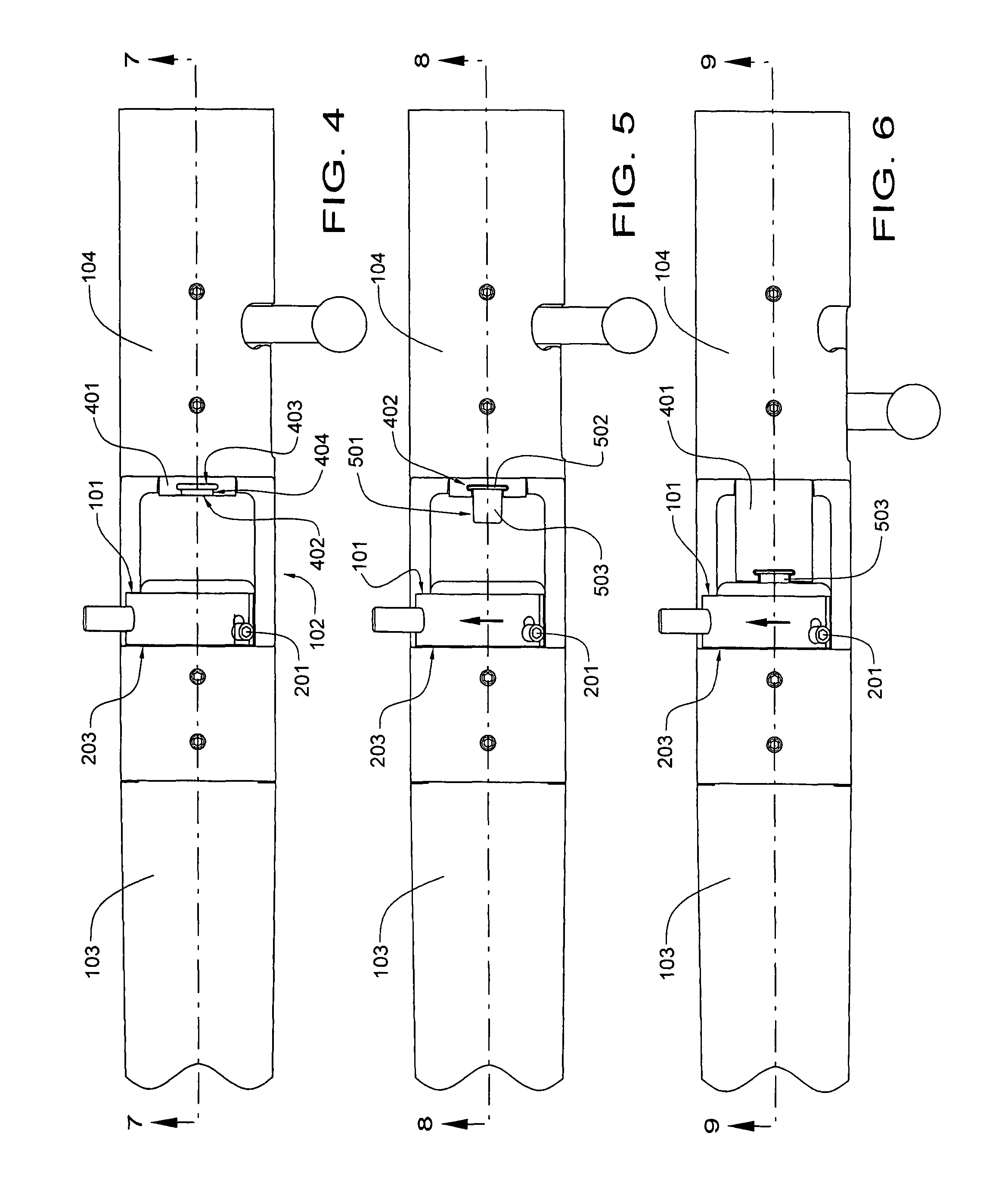Muzzleloader firearm system
a firearm system and muzzleloader technology, applied in the field of muzzleloading firearms, can solve the problems of cumbersome foregoing process, significantly less range of firearms, and generally less accurate, and achieve the effect of quick removal
- Summary
- Abstract
- Description
- Claims
- Application Information
AI Technical Summary
Benefits of technology
Problems solved by technology
Method used
Image
Examples
first embodiment
[0145]Referring now to FIGS. 57 through 60, a first embodiment detent mechanism 5701 is used to lock an easily-removable breech plug within the breech of a muzzleloader rifle. The detent mechanism includes a ball bearing 5702, a detent pin 5703 that is upwardly biased by a detent spring 5704, and a set screw 5705 which permits the detent pin 5703 to be moved vertically within the confines of a vertical notch 5706. When the detent pin 5703 is at the upward limit of its travel, the ball bearing 5702 is thrust outwardly by the full diameter of the detent pin 5703 through an aperture 5801 in the breech plug 5802. When depressed by a shooter, the ball bearing 5702 falls into a recess 5707 in the detent pin 5703.
[0146]Referring now to FIG. 60 in particular, the rear face of the breech plug 5802 incorporates a semi-circular slot 6001, which acts as a safety lock and prevents the bolt of a bolt action muzzleloader rifle from being fully closed if the breech plug is not in its locked positio...
second embodiment
[0147]Referring now to FIGS. 61 through 68, a second embodiment detent mechanism 6401 includes a driving detent pin 6101, a detent spring 6102, and a driven detent pin 6301, which locks the breech plug 6302 within the breech of the rifle barrel. It will be noted that the spring-loaded driving detent pin 6101 has a 45-degree-angle driving tab 6103 that perpendicularly intersects a 45-degree-angle drive groove 6303 on the driven detent pin 6301. Both the driving detent pin 6101 and the driven detent pin 6301 slide within their own cylindrical recesses in the breech plug 6302. The spring loading causes the sliding driven detent pin 6301 to urge its forward end 6304 into a semi-spherical recess (not shown) on the breech end of the rifle barrel. When the driving detent pin 6101 is depressed, the detent pin retracts the driven pin 6101 from the semi-cylindrical recess in the barrel, thereby permitting the breech plug 6302 to be rotated to its unlocked position. A set screw 6305 retains th...
PUM
 Login to View More
Login to View More Abstract
Description
Claims
Application Information
 Login to View More
Login to View More - R&D
- Intellectual Property
- Life Sciences
- Materials
- Tech Scout
- Unparalleled Data Quality
- Higher Quality Content
- 60% Fewer Hallucinations
Browse by: Latest US Patents, China's latest patents, Technical Efficacy Thesaurus, Application Domain, Technology Topic, Popular Technical Reports.
© 2025 PatSnap. All rights reserved.Legal|Privacy policy|Modern Slavery Act Transparency Statement|Sitemap|About US| Contact US: help@patsnap.com



